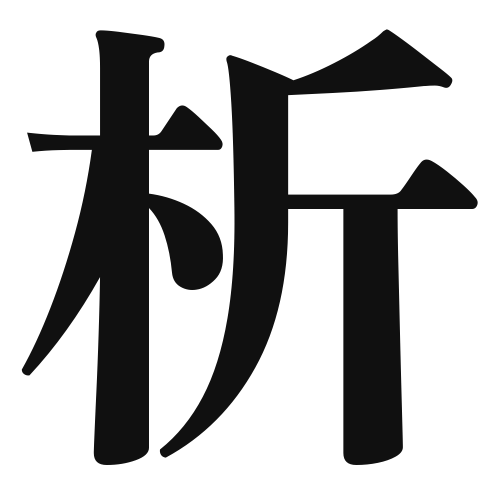1. Overview of Meaning
The kanji “析” (pronounced “saku” or “seki”) means to analyze or dissect. It conveys the idea of breaking something down into its components for better understanding.
2. Formation and Radical
Formation of the Kanji: The kanji “析” is a compound character (会意文字) that combines elements to convey its meaning. It consists of the radical for “water” (氵) and the character “石” (stone), symbolizing the act of breaking down or separating elements.
Radical: The radical of “析” is 氵, which is related to water and often signifies fluidity or change.
3. Examples of Usage
Common Words and Phrases: Some frequently used words that include “析” are:
- 分析 (ぶんせき, bunseki) – analysis
- 分析 (ぶんせき, bunseki) – decomposition
Example Sentences in Daily Conversation:
- このデータを分析する必要があります。 (We need to analyze this data.)
- 問題を分解して考えましょう。 (Let’s break down the problem and think about it.)
4. Synonyms and Antonyms
Similar Kanji: A similar kanji is “解” (かい, kai), which means to solve or untie. While both involve breaking down, “解” focuses more on finding solutions, whereas “析” emphasizes analysis.
Antonyms: An antonym of “析” could be “統” (とう, tō), which means to unify or integrate, representing the opposite action of breaking down into parts.
5. Cultural and Historical Background
Relation to Japanese Culture: The concept of analysis is significant in various fields in Japan, including education, science, and philosophy. The ability to dissect information is valued for critical thinking.
Proverbs and Idioms: One relevant idiom is “木を見て森を見ず” (ki o mite mori o minazu), which translates to “seeing the trees but not the forest,” emphasizing the importance of both analysis and synthesis in understanding the bigger picture.
